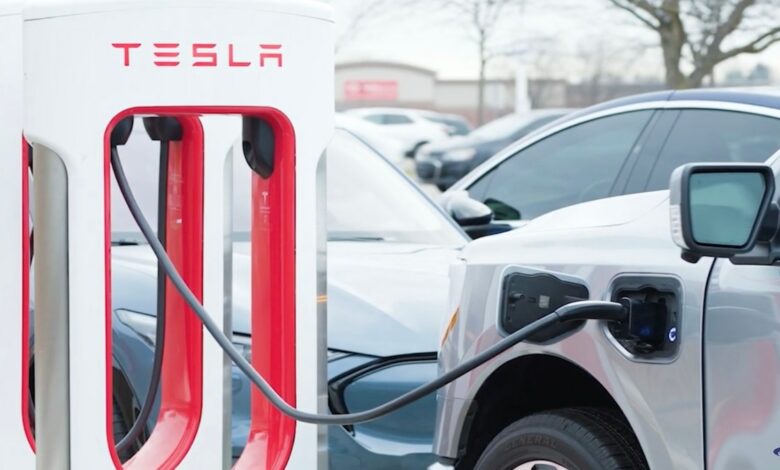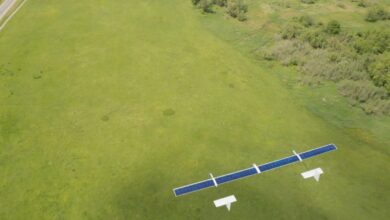Ford delays new EVs once more, showing why legacy automakers need to adopt a startup mentality

Ford announced Thursday that it’s delaying the production of two electric vehicles, a next-generation EV pickup and a three-row EV SUV. The pair are now slated to arrive in 2026 and 2027, delays of one and two years respectively. In their place, the automaker will be introducing hybrids across its U.S. lineup.
Ford’s CEO has been telegraphing the delays for months. Last fall, it postponed $12 billion in planned investments. Then on an earnings call in February, CEO Jim Farley said, “Hybrids will play an increasingly important role in our industry’s transition and will be here for the long run.” That’s the sort of sober talk that shareholders love to hear.
Wall Street is likely to cheer the move, especially after Toyota reported that its year-over-year sales in the United States rose 22% on the back of strong demand for hybrids. Ford’s shift appears designed to bolster cash flow and near-term profits, something that seems logical for a company of its size, especially in times of uncertainty.
But here’s the thing: Ford is unusual among established automakers in that it performs best when thinking like a startup, something it appears to have taken to heart more recently, EV delays notwithstanding. It succeeds better when it shapes the market than when it responds to it.
Most recently, that startup mentality was on display with the Mustang Mach-E, Ford’s all-electric crossover. When the EV started taking shape nearly a decade ago, the original plan was to build a perfectly sensible crossover powered by an electric motor at the front. The design was aerodynamic, but so uninspiring that one of the company’s exterior designers questioned who would buy it. Judging by the look of the proposed design, those doubts were understandable.
But then-CEO Jim Hackett scrapped the plan and gave the team just two years to come up with something new. The result was a crossover that has helped Ford claim second place in U.S. EV sales for several quarters in a row.
The Mustang Mach-E wasn’t a fluke. Ford has a record of pulling rabbits out of the hat. In the 1980s, when American automakers were getting shellacked by Japanese imports, Ford ditched its boxy, heavy designs and conjured up the Taurus, which went on sale in late 1985. The sleek, roomy, and affordable car was unlike anything American consumers had seen, and it was an immediate hit. Ford sold 1 million of them in the first three years, a success that likely saved the company from bankruptcy.
Five years later, Ford again pivoted with the introduction of the Explorer. SUVs were nothing new, but at the time most were two-door models focused on utilitarian qualities like towing and off-roading. Cars remained the dominant choice among consumers. But by adding rear doors and a raft of creature comforts, Ford transformed the SUV into a family-friendly hauler. It might have cannibalized sales of the company’s cars, but the decision to launch the Explorer proved prescient: Not only did it power another decade of growth for the company, it predicted a world where SUVs dominated the market.
There are other examples, too: Ford used a fast-and-lean approach when developing the original Mustang, allowing it to define an entirely new category of fast, expensive “pony cars.” It did the same after World War II when it produced what’s now known as the ’49 Ford, a car that broke with styling conventions and pushed the automaker back into the sales lead. And don’t forget the original Ford assembly line, which while not a product, was definitely a product of entrepreneurial thinking.
Farley faces different challenges today. His predecessors were basically mixing and matching designs, platforms and manufacturing techniques while the heart of each of those vehicles, the engine, remained largely the same. Electric vehicles challenge manufacturers to start with a clean slate, or at the very least rip out that heart without losing what made the original vehicle so great.
Ford has excelled at those tasks: The Mustang Mach-E and the F-150 Lightning are by most accounts not just excellent EVs, but excellent vehicles overall.
Still, they haven’t been the runaway successes that Ford expected. That’s in part because they were too expensive — price cuts have proven there’s still demand for them — and also because the charging infrastructure to support them remains underdeveloped. If charging is preventing Ford from selling more EVs, maybe it needs to address the problem head on. And if it can’t price its EVs competitively and still make a profit, maybe Ford needs to find a cheaper way to to manufacture them.
The company has already started down the path, forming a skunkworks led by ex-Tesla executive Alan Clarke to develop a low-cost EV. If the team succeeds in bringing a product to market, some of that startup spirit might be alive at Ford after all.
Source link




